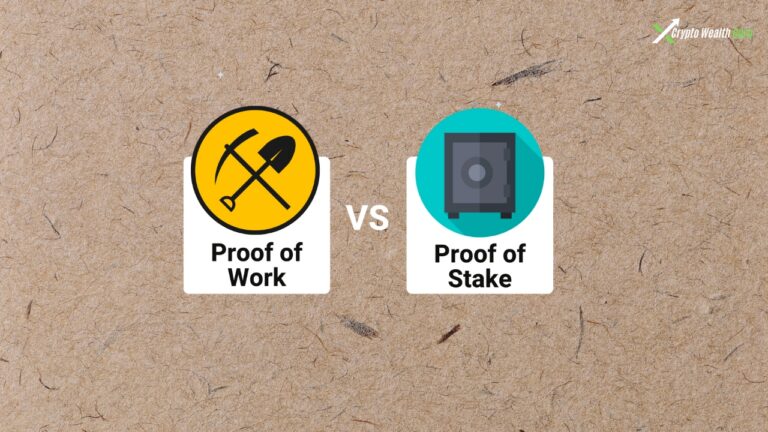History of Bitcoin: From Creation to Global Phenomenon
Bitcoin, the first-ever cryptocurrency, has taken the world by storm. Whether you’re a seasoned crypto enthusiast or a newbie just starting to get the hang of things, you’ve probably heard of Bitcoin. But how did it all begin? What’s the story behind this digital gold? Let’s break it down in a friendly, informal chat, because, honestly, it’s a pretty wild ride from start to finish. So grab a coffee, and let’s dive into the history of Bitcoin!
The Birth of Bitcoin: A Mysterious Creator
Bitcoin was born out of the ashes of the 2008 financial crisis, a time when trust in traditional banking systems was at an all-time low. But who was behind this revolutionary idea? Well, Satoshi Nakamoto is the name we all know, but here’s the thing—nobody really knows who Satoshi is. Some say Satoshi could be a group of people; others believe it’s just one person. Either way, Nakamoto published the Bitcoin whitepaper titled Bitcoin: A Peer-to-Peer Electronic Cash System in 2008.
Satoshi’s whitepaper laid out the blueprint for Bitcoin, solving the problem of double-spending in digital transactions by using a decentralized ledger called the blockchain. Bitcoin was going to be a currency that didn’t need a central authority, like a bank, to manage it. Revolutionary, right? It’s like taking the power back from the middlemen and putting it into the hands of the people. 💥
Why Was Bitcoin Created?
The motivation behind Bitcoin’s creation was simple: to give people control over their own money. Think about it—if you could send money to anyone, anywhere in the world, without needing to go through a bank or pay hefty transaction fees, wouldn’t you? Yeah, I thought so. Bitcoin was created to fix that. It aimed to be a decentralized and borderless currency, free from the control of governments and banks.
The First Block: A Historic Moment
Satoshi Nakamoto mined the first-ever block of Bitcoin, known as the Genesis Block, on January 3, 2009. And guess what? Satoshi embedded a hidden message in the block’s code. It read, “The Times 03/Jan/2009 Chancellor on brink of second bailout for banks.” Sounds like a bit of passive-aggressive commentary on the financial system, huh? 😜 This message was a nod to the ongoing banking crisis and a declaration of Bitcoin’s purpose.
The first Bitcoin transaction occurred just a few days later when Nakamoto sent 10 BTC to a computer scientist named Hal Finney. Back then, 10 BTC was worth less than a dollar. Crazy to think how much that 10 BTC would be worth today!
Early Days: Growing Pains
In the early days, Bitcoin wasn’t even seen as a legitimate currency. People didn’t understand what it was all about. The first major transaction in Bitcoin history was for two pizzas, bought for 10,000 BTC in May 2010. Can you imagine? That transaction is now worth hundreds of millions of dollars. Talk about a missed opportunity!
Bitcoin Goes Public: From Tech Nerds to Mainstream
In 2011, Bitcoin started gaining traction, with various online communities and tech enthusiasts catching wind of the cryptocurrency. Websites and forums like Bitcointalk became hotbeds for discussions about Bitcoin’s potential. But it wasn’t just a bunch of nerds chatting online. By 2011, Bitcoin’s value hit $1 per BTC, and it started to gain a reputation as a “digital currency with potential.”
Bitcoin’s rise also led to the birth of its first real competition—altcoins. Litecoin, created by Charlie Lee in 2011, aimed to improve upon Bitcoin’s transaction speeds. And there were others, too, like Ripple and Dogecoin. Each new coin brought something different to the table, but Bitcoin still reigned supreme as the king of crypto.
The Silk Road and the Dark Web
While Bitcoin was slowly gaining recognition as a legitimate currency, it was also gaining a reputation for being the go-to payment method on the Silk Road, an underground marketplace on the dark web. This led to some controversy, as Bitcoin was associated with illegal activities like drug dealing and hacking. In fact, Silk Road founder Ross Ulbricht was eventually arrested and sentenced to life in prison for operating the marketplace.
This period in Bitcoin’s history wasn’t all bad, though. It helped demonstrate the true power of Bitcoin: anonymous, decentralized transactions. However, this also gave governments and financial institutions a reason to keep an eye on the crypto world. You know, the “if you can’t beat them, join them” approach.
Bitcoin Becomes Mainstream: The Wild Roller Coaster Ride
By 2013, Bitcoin had exploded in value, climbing to $266 per BTC, before crashing down to $50. And that was just the beginning. Bitcoin’s value fluctuated wildly over the next few years, as it gained both supporters and skeptics. But it wasn’t just the value of Bitcoin that was going crazy—it was the media buzz. Headlines like “Bitcoin hits $1,000!” and “Bitcoin crashes to $200!” were the norm. Everyone seemed to be talking about it, but nobody could quite figure out where Bitcoin was headed.
In 2017, Bitcoin hit an all-time high of nearly $20,000 per BTC. Some people saw their fortunes grow overnight, while others watched in horror as the bubble burst and Bitcoin’s price dropped. Still, despite all the ups and downs, Bitcoin remained standing, proving it was more than just a passing trend.
The Institutional Interest
In recent years, Bitcoin has caught the attention of major financial institutions. Companies like Tesla, Square, and MicroStrategy have publicly invested in Bitcoin, and traditional financial institutions have begun offering Bitcoin-related services. Heck, even PayPal jumped on the Bitcoin bandwagon, allowing users to buy and sell Bitcoin on its platform. As more companies and institutions start adopting Bitcoin, its legitimacy as an asset class continues to grow.
Bitcoin Today: More Than Just a Currency
As of 2025, Bitcoin has evolved from a niche experiment into a global phenomenon. It’s now used not only as a store of value but also for remittances, cross-border payments, and even hedging against inflation. Bitcoin has survived multiple crashes, government crackdowns, and technological hurdles, proving that it’s not just a fleeting trend.
But here’s the big question: Is Bitcoin a bubble waiting to burst, or is it here to stay? Well, no one can predict the future. But one thing’s for sure—Bitcoin has changed the way we think about money and has paved the way for the cryptocurrency revolution.
The Future of Bitcoin: Will It Rule the World?
So, what does the future hold for Bitcoin? In my opinion (and this is just my opinion, okay?), Bitcoin is here to stay. It’s not going to replace traditional currencies anytime soon, but it’s certainly going to carve out a space for itself in the global financial system. With the rise of Bitcoin ETFs and more institutional adoption, the future of Bitcoin looks brighter than ever.
But what do you think? Is Bitcoin just the beginning, or is it the beginning of the end? 🤔
Conclusion: Wrapping Up Bitcoin’s Wild Journey
From a whitepaper in 2008 to a global phenomenon in 2025, Bitcoin’s journey has been nothing short of remarkable. It’s had its ups and downs, but the crypto world has evolved alongside it. Whether you’re in it for the potential gains or just the tech behind it, Bitcoin’s history is one for the books. And who knows? In another 10 years, we might be talking about Bitcoin 2.0. 🌟
So, what’s next for Bitcoin? Will it reach new heights or face another crash? Time will tell, but one thing’s for sure: Bitcoin has forever changed the world of finance.







